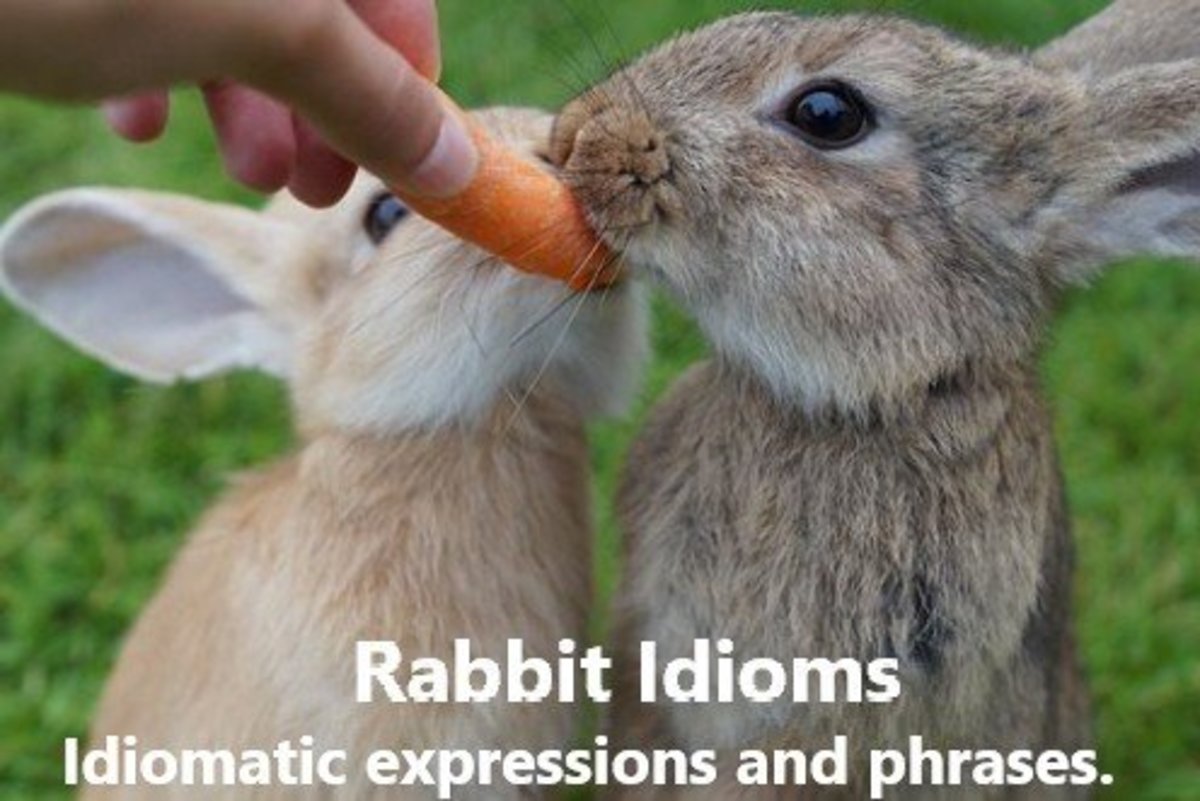Funny English Language : English Words From Things Chinese (Part 1 Of 2)
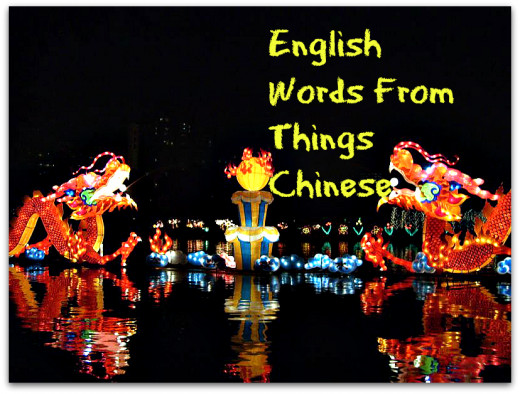
English In A Variety Of Accents
I have written many articles about the English language. The latest was English words derived from the Japanese. Now I like to share with you English words from things Chinese. These are words either derived from the Chinese language or remind us of things Chinese. Hence the title “English Words From Things Chinese”.
The English language is a very versatile language. Speak it in whatever accent, and you will still be understood; well, most of the time at least! My son-in-law is English and I suppose he speaks in the Queen’s accent. And I? I speak Manglish or more popularly called Singlish. Manglish is Malaysian English, and Singlish is Singaporean English. Actually both are similar, but again depend on who is speaking. In our country, we have 3 main racial groups; Chinese, Indians and Malays. And we speak with our peculiar accent. As English is spoken in foreign countries, it is inevitable and most likely to have local flavors in the place that is spoken. Over time, many popular foreign words are accepted as English words, and can be found in the dictionary.
I Am A Banana
By the way, I am a “banana”! Not the eating one, but figuratively speaking. Look at the banana, it is yellow outside but white inside. Exactly like me, yellow outside but white inside. “Yellow” being Chinese, but thinking in English which is “white”. Actually, the color denominations are flawed. Chinese are not “yellow” and Caucasians are not “white” unless you are color blind!
Let me now share with you the A to Z of words that the Chinese have contributed to the Queen’s English language and also words and terms that associate with things Chinese. Some words may not be too familiar with you and you won’t associate them with things Chinese, but believe me if you are a Chinese like me, these English words and terms have Chinese connotations.
By the time you finish reading this article, you may become a bit Chinese. Then as the Chinaman used to say, “Little me, big trouble”!
The Old Traditional Chinese Abacus (7 Beads)
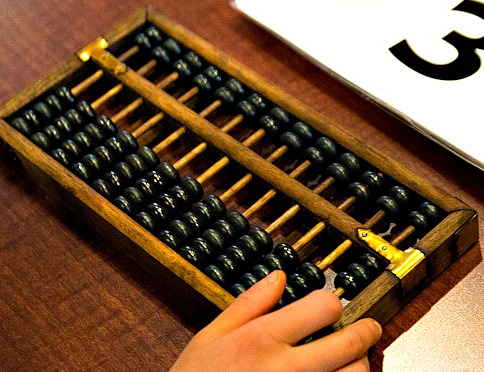
The Modern Abacus (5 Beads)
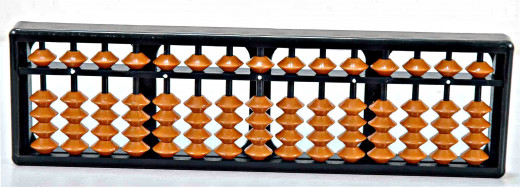
Yao Ming (Rockets #11)

Traditional Chinese Brush Painting
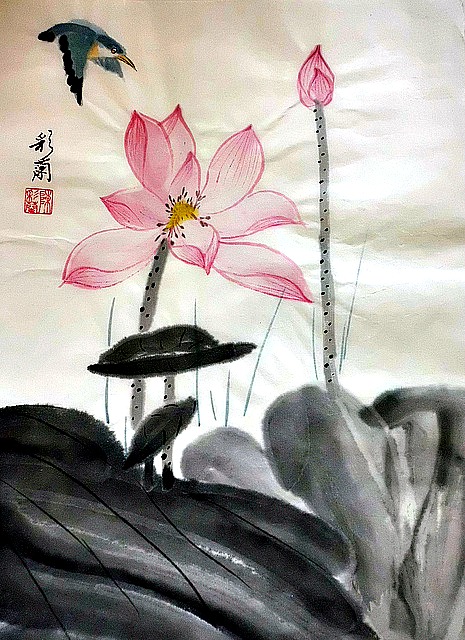
The A To Z Of Things Chinese In English Words
Let us now take a nostalgic trip to the fascinating world of the Chinese, from A to Z.
A is for abacus. The abacus is actually a manual calculating computer. The Chinese have used it for thousands of years. The Koreans and Japanese are also using the abacus. The traditional Chinese abacus has 7 beads per row, but the modern version which does the same job has only 5 beads per row and is much lighter, smaller, and faster to manipulate.
B is for bamboo. The bamboo is a most versatile material. The Chinese have used bamboo since time immemorial. It has a thousand and one uses, including the delicious bamboo shoots, a Chinese culinary delicacy. Before the metal scaffolding made its presence in the building industry, the Chinese depended on bamboo scaffoldings. These bamboo scaffoldings are very reliable for their ability to withstand wind and will never collapse.
B is for basketball, but what has it got to do with things Chinese? For the Chinese, yes. Have you heard of Yao Ming, the Chinese professional basketball player? He is now retired, used to play for Houston Rockets of the NBA. Yao Ming was the tallest player at 2.29 meters (7 ft 6 in).
B is also for “big trouble”, which is literally translated from the Chinese term. This term is a favorite for any Chinese in serious trouble.
B is for bird's nest. Not the usual bird nest made from twigs, straws and leaves. This bird's nest belongs to the swiflets which build their nests with their special saliva. This bird's nest is a very expensive Chinese delicacy mostly prepared in clear soup form.
B is for boat pullers. I bet most probably you don’t know this. These are very hardy Chinese, working along part of the Yangtse River literally pulling boats upstream. I think only one of its kind in the world!
C occupies a predominant place in things Chinese. It is befitting since “China” starts with a big “C”. Let’s see what “c” is for both English and Chinese.
C is for charlady or charwoman. The dictionary gives the meaning as “a woman hired to do general cleaning, especially in a big house or an office”. “Char” means “tea” in Chinese.
C is for the sexy cheongsam, the eternal, elegant, body hugging attire worn by the pretty petite Chinese ladies.
C is for china itself albeit a different meaning with a small letter c. You have come across fine china, those delicate porcelain wares, or generally called chinaware.
C is for China doll which has two meanings. A china doll is a doll made partially or wholly out of glazed porcelain. Surprisingly, antique china dolls were produced in Germany between 1840 and 1890. Another less flattering meaning refers to those pretty lasses from China offering “private and personal” services! By the way, “China Doll” (aka “Time Is A Memory”) also refers to a 1958 film set during World War II starring Victor Mature and the Chinese evergreen beautiful actress Li Li Hua.
C is for Chinaman. You may not know the implied meaning of this. My sister-in-law always refers me as a “Chinaman”. This is somewhat an unflattering term to mean a simpleton, especially in social behavior and culinary taste. Of course my sister-in- law never meant to insult me.
C is for “China year”. China has seen unprecedented tremendous progress in development the last 30 years. Never before in the history of mankind have we witnessed such great speed and surge in material and economic development in any nation. For this fact, economists now measure a nation’s rate of economic progress in term of one “China year”. It means how long a nation takes to achieve the equivalent progress that China makes in one year. So if the nation takes 10 years to reach one China year, it means this nation will take 10 years to achieve what the Chinese did in one year.
C is also for Chinese calligraphy. Chinese calligraphy is an art by itself. It is very difficult to write with a brush. Try it and you will know why. You need years of practice and great skill to produce a masterpiece.
C is for Chinese opera. Actually, throughout China, there are many different types of opera. But the most famous being the Peking opera.
C is for Chinese painting. For a country rich in history and culture, art is the epitome of civilization. There are many types of Chinese art, but the most famous is the characteristically watery black ink brush paintings.
C is for chopsuey which is a dish introduced by the Chinese American to describe a fried dish with everything in it, meat, veggies and eggs and what have you. “Chopsuey” can be translated as “assorted pieces”.
Have you watched the 1961 film “Flower Drum Song” starring Nancy Kwan? If you are a young reader, most probably you don’t even heard of Nancy Kwan, let alone watched her act. But never mind, you can watch the Youtube video below for the song “Chopsuey”.
Chopsuey Song From "Flower Drum Song"
Chinese Wooden Clogs
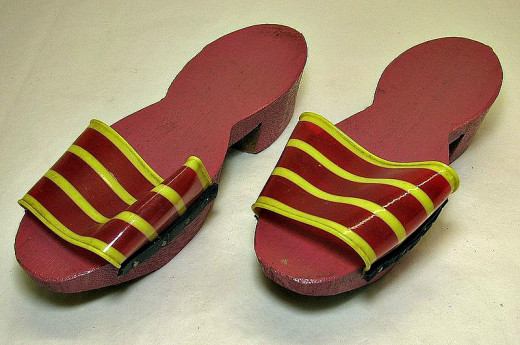
Samples Of Chinese Dim Sum
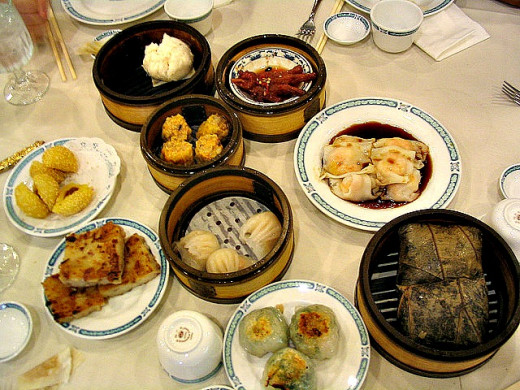
Dragon Dance
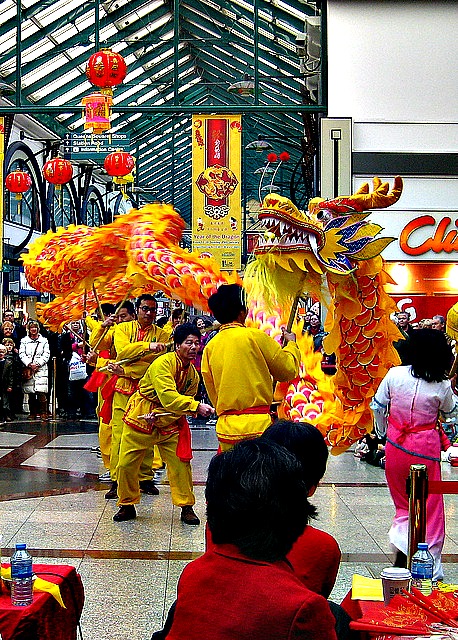
From Chopsuey To Facemask
Hope you enjoy the above chopsuey video. Now let’s continue.
C is for clogs. Most Caucasians will associate clogs with Holland and its quintessential wooden clogs. For Asians, clogs will be associated with China, as China also produces its peculiar simple wooden clogs.
C is of course for communism. Which country can claim unprecedented success embracing communism? Only China; with its revised practical version of communism to suit modern times.
C is for compass. Do you know the Chinese invented the compass? The famous Chinese navigator explorer, Admiral Zheng He with the aid of the compass, sailed the seven seas between 1405 and 1433, long before Christopher Columbus was born?
C is for coolie. Coolie in the dictionary is described as an offensive word meaning “an unskilled, lowly paid laborer, especially Chinese and Indians. “Coolie” is from two Chinese words, “ku” meaning sorrow, and “li” meaning “labor”, hence “sorrowful labor”.
D is for dimsum; you know those little dainty pieces of “finger” foods with an assortment of ingredients and condiments in various colors, shapes and sizes offered in Chinese restaurants. These delicious pickings usually are steamed, and served piping hot. Take a look at a sample of dimsum on the right photo.
D is also for dragon boat race and dragon dance. These two traditional Chinese festive entertainments are most well-known. What were a traditional celebrations, both are now also treated as sports with competitions held worldwide.
D is for dynasty. Although the word “dynasty” is a general term for a sequence of rulers from the same ancestry, it is specifically used to refer to the various dynasties in Chinese history.
E is for egg fuyong, which has a number of different spellings like "egg foo young" and "egg fooyong". It is basically a fried omelette dish but with added ingredients such as onions, prawns, dried Chinese sausage pieces, and anything one fancies.
E is for the infamous Chinese Empress Dowager Cixi (pronounced : Tzu Hsi). Empress Cixi was the last empress dowager of the last Chinese Ming Dynasty. It was during her final years that the European nations plundered China.
E is for eunuch. “Eunuch” is a castrated male. It is one of the three terrible curses on the Chinese. What are the other two? As you read through this article, eventually you will know. I think old China was the only place on earth ever to have eunuchs serving for life in the palace ground of the Emperor. For those who do not know the value and purpose of eunuchs, they were fool-proof servants in the palace ground to ensure the chastity of the Emperor’s harem.
F is for facemask. What has facemask got to do with the Chinese? Magic and entertainment. This form of magic is called the art of changing facemask. This changing facemask performance was originally part of the Chinese opera. However, now it is performed as a separate entertainment. The best way to explain is to present the Youtube video below:
The Art Of Changing Facemask
From Fireworks To Foot Binding
F is for fireworks. The Chinese were the first to play with fireworks. Yes, play. Fireworks were solely for entertainment and for celebrating happy events.
F is for flute. Bamboo flutes for that matter. There are two basic groups of Chinese bamboo flutes, played either horizontally, or vertically. Chinese bamboo flutes vary in sizes from the very short and slim to the very long and stout. The sound ranges from the exciting high pitch of the short flutes to the mellowed and melancholic long vertical flutes. Of course, the Chinese have specific names for the different flutes.
F is for foot binding. This is the second curse on the Chinese. The Chinese were the only race to practise this horrible tortuous infliction. Just imagine, little girls as young as four years old had to undergo this very painful and life-threatening ritual. I can’t imagine putting my little daughter through such a heinous ordeal. To me this was the greatest curse on the Chinese, which started during the 10th century and lasted until the early 20th century, a period of nearly 1000 years. Horrible!
I am feeling “sick to my stomach” after writing about foot binding. I need to take a rest and calm myself. For the continuation of this article please click HERE for “English Words From Things Chinese (Part 2 Of 2).
Fireworks Display

Link To My Other Interesting And Beneficial Articles
If you find this article interesting or beneficial, you may go to my "Profile" page to read my other articles by simply CLICKHERE:
By the way, the copyright to this article is owned by Good Guy. Please do not “copy and paste”! Thank you.


